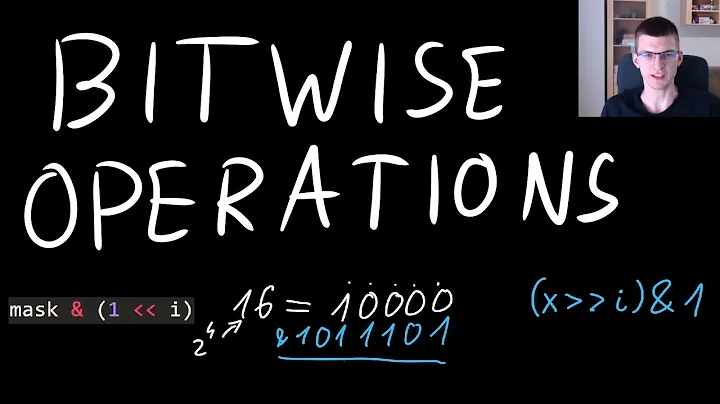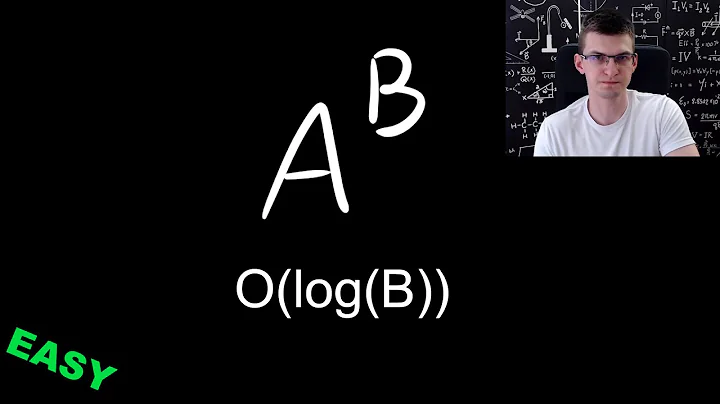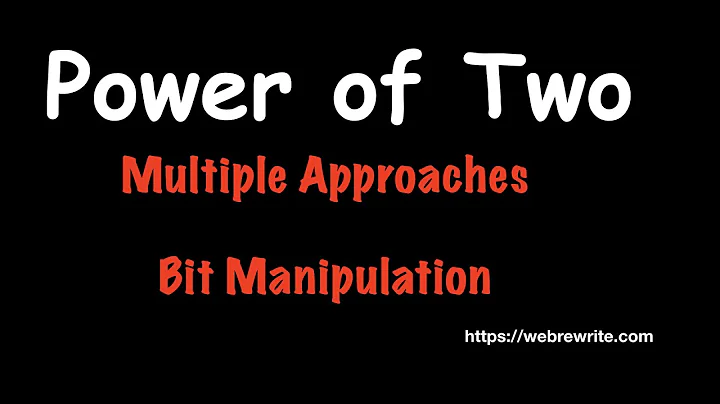Mod of power 2 on bitwise operators?
Solution 1
He meant that taking number mod 2^n is equivalent to stripping off all but the n lowest-order (right-most) bits of number.
For example, if n == 2,
number number mod 4
00000001 00000001
00000010 00000010
00000011 00000011
00000100 00000000
00000101 00000001
00000110 00000010
00000111 00000011
00001000 00000000
00001001 00000001
etc.
So in other words, number mod 4 is the same as number & 00000011 (where & means bitwise-and)
Note that this works exactly the same in base-10: number mod 10 gives you the last digit of the number in base-10, number mod 100 gives you the last two digits, etc.
Solution 2
What he means is that :
x modulo y = (x & (y − 1))
When y is a power of 2.
Example:
0110010110 (406) modulo
0001000000 (64) =
0000010110 (22)
^^^^<- ignore these bits
Using your example now :
1011000111011010 (45530) modulo
0000000000000001 (2 power 0) =
0000000000000000 (0)
^^^^^^^^^^^^^^^^<- ignore these bits
1011000111011010 (45530) modulo
0000000000010000 (2 power 4) =
0000000000001010 (10)
^^^^^^^^^^^^<- ignore these bits
Solution 3
Consider when you take a number modulo 10. If you do that, you just get the last digit of the number.
334 % 10 = 4
12345 % 10 = 5
Likewise if you take a number modulo 100, you just get the last two digits.
334 % 100 = 34
12345 % 100 = 45
So you can get the modulo of a power of two by looking at its last digits in binary. That's the same as doing a bitwise and.
Solution 4
Modulo in general returns the remainder of a value after division. So x mod 4, for example, returns 0, 1, 2 or 3 depending on x. These possible values can be represented using two bits in binary (00, 01, 10, 11) - another way to do x mod 4 is to simply set all the bits to zero in x except the last two ones.
Example:
x = 10101010110101110
x mod 4 = 00000000000000010
Solution 5
Answering your specific questions:
- mod is a remainder operator. If applied to a series of numbers x in 0, 1, ..., then x mod n will be 0, 1, ..., n-1, 0, 1, ..., n-1, ad infinitum. When your modulus n is a power of 2, then x mod n will count up in binary from 0 to n-1, back to 0, to n-1, etc; for modulus n that looks like binary 01xxxxx, x mod n will cycle through every of those low-order bits xxxxx.
- binary 1011000111011010 mod 1 is 0 (mod 2^0 yields the last zero bits; everything mod 1 is zero). binary 1011000111011010 mod binary 10000 is 1010 (mod 2^4 yields the last four bits).
- Division and remainder of binary number by powers of two is particularly efficient because it's just shifting and masking; mathematically it's nothing special.
- Example: See answer to question 2.
Related videos on Youtube
Comments
-
 Zo Has almost 2 years
Zo Has almost 2 years- How does mod of power of 2 work on only lower order bits of a binary number (
1011000111011010)? - What is this number mod 2 to power 0, 2 to power 4?
- What does power of 2 have to do with the modulo operator? Does it hold a special property?
- Can someone give me an example?
The instructor says "When you take something mod to power of 2 you just take its lower order bits". I was too afraid to ask what he meant =)
-
starblue almost 13 yearsWhy don't you try a few example calculations by hand, then you'll see what happens.
- How does mod of power of 2 work on only lower order bits of a binary number (
-
 Zo Has almost 13 yearsHey thanks for the reply. I did not got your example completely ?
Zo Has almost 13 yearsHey thanks for the reply. I did not got your example completely ? -
 Zo Has almost 13 yearsWould that hold for powers of 2 as well ? 54 % 32 which is 2^5 gives 22.
Zo Has almost 13 yearsWould that hold for powers of 2 as well ? 54 % 32 which is 2^5 gives 22. -
Brian almost 13 yearsPopo: Yes. The number of bits at the end is determined by which power of two you're using. As described by Cicada, you would calculate it as 54 & (32-1).
-
calandoa over 7 yearsThis is only the case when all operands are positive! Depending on the language the behavior will differ. For instance in C,
-5 % 4 == -1despite the fact that in algebra we usually expect that-5 mod 4is 3 (and in C:-5 & (4 - 1) == 3. This means for instance that a compiler will not optimize a literal% 4with a&if the left operand is not unsigned. -
 BlueRaja - Danny Pflughoeft over 7 years@calandoa: We are discussing binary as a number system here, not bit-encoding of numbers.
BlueRaja - Danny Pflughoeft over 7 years@calandoa: We are discussing binary as a number system here, not bit-encoding of numbers.-5, for instance, is written-101. -
calandoa over 7 years@BlueRaja: Of course we are talking about bit encoding :
&is not defined for mathematical-. I guess your remark is more "we are not talking about negative numbers". Maybe we are not, but this is not clear in the question nor in your answer, so I made it clearer. -
 Sandburg over 4 yearsDo you thing at something like
Sandburg over 4 yearsDo you thing at something likenumber MOD 256<=>(number & (0xFF00)) >> 8(for 2^8 = 256)






